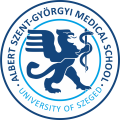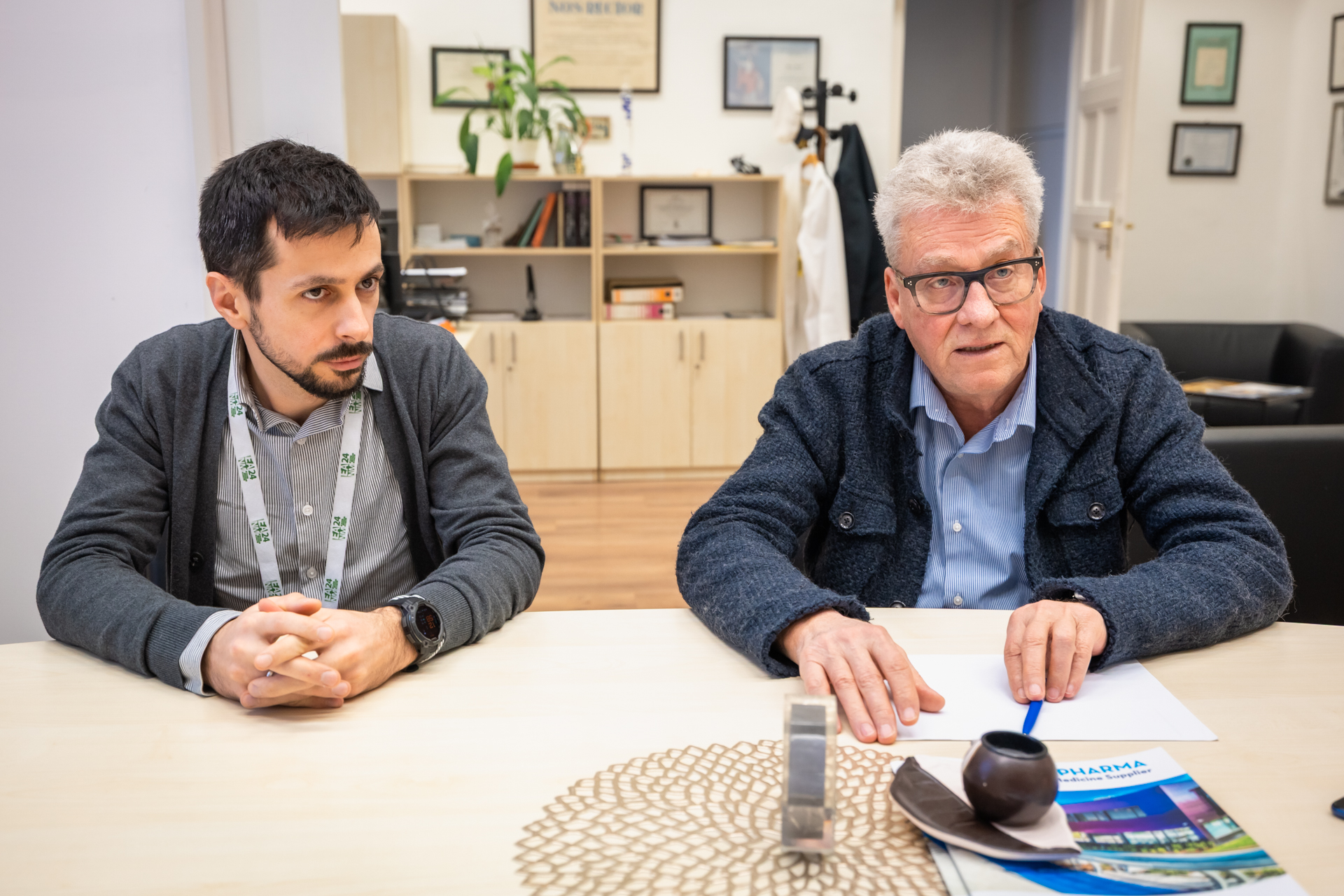University of Szeged
Albert Szent-Györgyi Medical School
Foreign Students' Secretariat
Your Education. Our Mission.

From Department of Surgery to Health Sciences Education Center
The Health Sciences Education Center will be an important venue for SZTE’s triple mission of research, health care and education, where students will be able to familiarize themselves with the cutting-edge technology currently used in health care in a state-of-the-art environment.
The inpatient health care facilities of the Faculty of Medicine were purpose-built for both health care and medical education after the University of Kolozsvár (now Cluj-Napoca, Romania) moved to Szeged following World War I. The construction of the five big teaching hospitals including the Department of Surgery started in 1926 along the bank of the River Tisza and by 1929 all buildings had been completed. Actual inpatient and outpatient care started in that year and continued until 2016, when the building was closed for renovation and reconstruction. The standard of surgical interventions performed over this nearly one-hundred-year period is well illustrated by the fact that the very first live-donor kidney transplantation in the Central-Eastern European region was performed here in 1962.


The former building of the Department of Surgery is being renovated with the EU’s Human Resource Development Operational Programme funds to provide a new education center for health sciences the at the University (SZTE) from the beginning of Academic Year 2022/ 2023. The Health Sciences Education Center will be an important venue for SZTE’s triple mission of research, health care and education, where students will be able to familiarize themselves with the cutting-edge technology currently used in health care in a state-of-the-art environment. The rector of the university, Dr. László Rovó said that it is the top priority of the university to preserve and develop the quality of education at the Medical School. He also emphasized that the renewal of the building is a good example of combining modern medical education with old foundations.
The renovation of the 7-storey building, which covers more than 10,000 square meters, includes the complete replacement of the roof, the demolition of partitions and the renewal of the façade. The project involves the complete transformation of the building into a most modern education and training facility. The educational environment created will provide a space for mastering higher level practical skills as well as developing inter-professional cooperation skills. Among other things, the center will house skill units, teaching spaces, functional areas for small group work, laboratories for research and community spaces. The center will also serve as an interdisciplinary meeting place with the possibility of practical training in joint teamwork between the faculties involved in the project. In addition to the medical-professional benefits, this integrative approach has a cost rationalization effect as well.


The basement of the building will house technical building services, as well as the operation and maintenance area. The ground floor will serve as a student community center with an assembly hall, lobby and café.


The Health Sciences Education Center will give home to simulated operating rooms, cadaveric simulation and an emergency theatre (simulation ambulance). These multifunctional spaces and further simulation rooms equipped with high-tech interactive patient simulators will allow SKILL, or practical skills training, to be held in simulation environments. With units designed to meet specific needs, such as the cadaver operating theatre and the microsurgery training center, the University of Szeged will also fulfil the requirements of international training programs. The technology systems of the building will allow the recording and evaluation of practical training sessions, so that students will be able to follow the interventions in the simulation operating theatres while sitting in the seminar rooms
Today the importance of simulation and immersive training is constantly increasing, thus there is a growing need for moving health education from the lecture hall to active, team-based learning in the same type of small-group environments that students will encounter as practicing healthcare professionals. Students of the respective faculties will therefore be able to acquire concepts of team dynamics and hospital-based critical incident response for interdisciplinary/inter-professional teams. The technological solutions of the tools will lay the foundations for the development of digital literacy. Skills training with simulation equipment allows students to perform interventions without risk. The sequence of movements performed on the medical device can be followed on a monitor or projector, and the software will indicate the precision of the simulation exercise or even the necessary changes.
In addition to the skill development facilities, the center will also serve for theoretical education, with seminar rooms available for use by all faculties concerned








